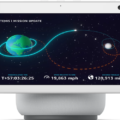A team of astronomers has developed a new technique designed to quickly and accurately identify exoplanets orbiting two suns. Known as circumbinary planets, this type of alien world first came to prominence in the 1977 film Star Wars, where viewers were treated to a twin sunset on Luke Skywalker’s fictional home planet of Tatooine.
BACKGROUND: SEARCHING FOR EXOPLANETS ORITING TWO SUNS
“Detecting circumbinary planets is much more complicated than finding planets orbiting single stars,” explained Nader Haghighipour, an astronomer from the University of Hawai’i at Manoa and leader of the research team “When a planet orbits a double-star system, transits of the same star don’t occur at consistent intervals.”
Instead, said Haghighipour, the planet might transit one star first, “and then transit the other, before transiting the first star again, and so on.”
This type of orbit also takes significantly longer than the orbit of the binary stars themselves, meaning that astronomers need to keep their telescopes focused on the twin star system for a long enough time to spot the exoplanet transiting both stars. This was not a problem for NASA’s Kepler planet hunting missions, which remained focused on one area of space for three and a half years and successfully spotted a number of exoplanets. However, the Transiting Exoplanet Survey Satellite (TESS) missions were tasked with examining one part of space for only 27 days before moving on, meaning that they may not have recorded enough data for astronomers to spot these types of planets.
As part of both the Kepler and TESS teams, which combined still found 14 circumbinary planets, Haghighipour and others decided to look for a workaround to this specific problem.
ANALYSIS: A BETTER WAY OF FINDING EXOPLANETS ORBITING TWO SUNS
With a little experimenting, the astronomer and his colleagues ultimately found a successful model that they believed could use the light spectra data from such a short observation to determine if a circumbinary planet was orbiting a twin star system, as long as the planet crossed in front of each star at least once during the 27 day observation period. That theory was published in The Astronomical Journal in 2020.
Now, Haghighipour and his team’s theory has finally proven successful, with the first detection of an exoplanet orbiting two suns in the system TIC 172900988. That detection was made by the TESS Circumbinary Planet Working Group using their method earlier this year.
“This planet’s orbit takes almost 200 days—with the traditional transit method, we would have needed to wait over a year to detect two additional transits,” explained Haghighipour. “Our new technique reduced that time to just five days, showing that despite its short window of observation, TESS can be used to detect circumbinary planets.”
Haghighipour is co-author of the paper describing their successful detection, along with lead authors Veselin B. Kostov from the NASA Goddard Space Flight Center, researchers from the SETI Institute, and others from the GSFC Sellers Exoplanet Environments Collaboration.
OUTLOOK: THE PROOF IS IN THE EXOPLANET
It may be generations before humans can visit one of these far, far away worlds and stand on its sandy surface to ponder the cosmos like Luke Skywalker did a long time ago, but the new method pioneered by Haghighipour and the rest of the TESS working group provides humans the ability to peer even deeper into the data, helping researchers find a type of planet previously seen only in science fiction.
“The new planet is the proof of the validity, applicability and success of our invented technique,” said Haghighipour. “This discovery demonstrates that our new technique works and will be able to find many more planets.”
Follow and connect with author Christopher Plain on Twitter: @plain_fiction
